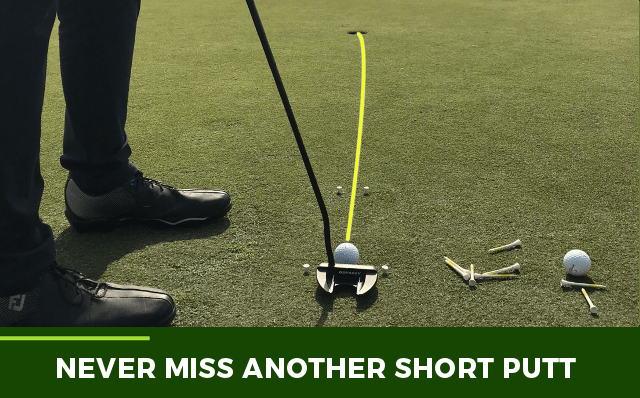
- Notice what you’re focusing on while you’re waiting for your turn to putt
A lot of the players I speak to who have his issue spend the time that they are waiting to putt, thinking about what might happen with the putt they are facing. There might be some self-talk about what the putt means: “You need to make this to remain at level par or, if you miss this, you’ll be one over…or even worse, you better not do what you did last time!”.
If you’re standing there while your playing partners are putting, thinking about what will happen over your putt, you’re going to build anxiety which is going to tighten your muscles and your grip pressure. The end result will be a tight, jabby stroke. In between any shots, it’s an exercise in staying present and keeping your mind quiet. You can start the thinking process during your shot routine.
- Keep the process consistent
Having familiarity and focusing on what’s most important for you during your pre-putt routine is very important. Perhaps have a pre-shot trigger to remind you to focus on the steps of your routine. E.g. Picking your spot to aim at, visualizing the ball going in, focusing on tempo during your practice strokes, how you align and set your ball position etc. Make these a habit and a pre-putt check-list and you’ll make more short putts. Alignment for putting is a key part of this process, so be sure to have an intermediary spot picked out or use the line on the ball to make sure the putter face is square to the line you intend the ball to start on.
- Notice where your focus is right before the putt
My student said that he was staring at the ball for longer over short putts. In fact I can tell when a player is struggling with confidence in their putting by the time they spend looking down at the ball. The time between setting the putter down behind the ball and starting the stroke is very important. If we’re not making each putt “reactive” to what we see in front of us, then we allow time for doubt to set in, which will affect the fluidity of the stroke. Good putters stay engaged with the target and the intention for the putt, and start their stroke as their eyes return the ball.
Here’s a trick you can try for dealing with this time. Do these steps to the count of “1-2-3-4-5”.
- Place putter behind the ball aligning to spot or line on the ball
- Look at the hole and imagine the line of the putt and where the ball will enter the hole
- Glance back at the ball
- Look at the hole again and imagine the line of the putt and where the ball will enter the hole
- As you bring your eyes back to the ball, start your stroke.
This sequence will ensure your conscious mind is occupied fully (on something positive) before pulling the trigger with little tension. Give these a go and I’m confident you’ll make more short putts.
